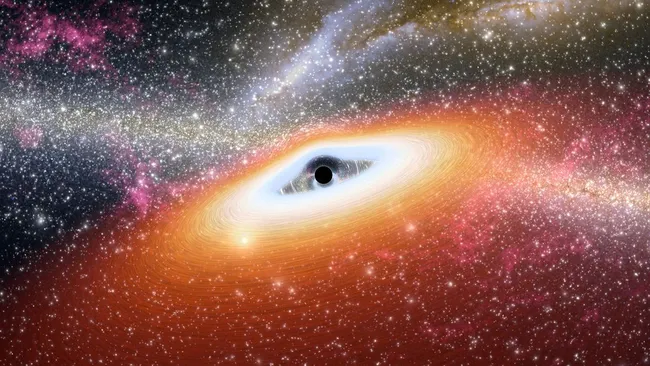New Simulations Capture the Turbulent Initial Moments in the Life of a Black Hole
Scientists modeled how black holes and neutron stars form after dying stars collapse, and explained why some get a hard ‘kick’ into interstellar space.
Astronomers have unraveled the mechanism behind the ejection of infant black holes from dying stars, and the process is far from graceful.
According to a recent study, these rare black holes receive a powerful thrust when their parent stars meet their demise in a cataclysmic explosion. This propels the nascent gravitational gluttons at astonishing velocities, offering valuable insights into the mysterious early stages of a black hole’s existence.
Black holes and neutron stars are born within the cores of massive dying stars. As these stars approach the end of their lives with a mass at least eight times that of the sun, they undergo fusion of iron in their cores. The immense pressures transform the iron core into a proto-neutron star, a cluster of neutrons comparable in size to a city. This cluster temporarily halts the gravitational collapse of the remaining star, typically triggering a supernova explosion. However, in certain cases, the pressures within these explosions escalate, causing the proto-neutron star to collapse into a black hole.
The outcome of what comes next remains uncertain. Previous computer models of supernovas only simulated a fraction of a second of the process, focusing solely on capturing the explosion itself. However, observations of real black holes and neutron stars have revealed various intriguing phenomena. For instance, some neutron stars travel at speeds exceeding 3.4 million mph (5.4 million km/h), indicating that they were forcefully propelled during the explosion. Conversely, others move at a much slower pace, suggesting a more peaceful birth process.
In contrast, black holes typically exhibit low velocities despite their creation being significantly more violent.
To shed light on the early stages of black holes and neutron stars, a team of astronomers conducted 20 computer simulations of supernovas. These simulations were run for a sufficient duration to observe how each object was propelled by its parent star. The findings of their research were published on the preprint database arXiv on November 20 and have been submitted to The Astrophysical Journal for peer review.

The astronomers discovered a strong correlation between the characteristics of the parent star, known as the “progenitor,” and the resulting neutron star or black hole. When the parent star is relatively less massive and less compact, meaning its outer layers are larger compared to its core, the supernova occurs abruptly and in a nearly perfect spherical shape, resulting in a slowly moving neutron star.
Conversely, progenitors that are highly massive and compact take longer to undergo supernova, and when the explosions transpire, they are asymmetrical. This leads to the emergence of a rapidly moving, propelled neutron star amidst the chaos. The researchers also observed that larger neutron stars tend to experience stronger propulsion, indicating that a greater portion of the core mass of a compact progenitor ends up in a neutron star.
The spin of neutron stars can also be influenced by their progenitors, with the researchers discovering that a stronger kick results in a greater spin. Therefore, if the progenitor star undergoes an asymmetrical explosion, it not only propels the neutron star outward but also increases its rotational speed. This phenomenon could potentially provide an explanation for the existence of magnetars, which are neutron stars characterized by rapid rotation and intense magnetic fields.
There are two mechanisms that explain how black holes acquire their kicks. In one scenario, the progenitor star fails to fully explode, but the pressure exerted on its core reaches a critical point, leading to the formation of a black hole. These black holes tend to be relatively large, averaging around 10 times the mass of our Sun, and experience minimal displacement. The majority of black holes fall into this category.
However, black holes can also form through a different pathway. In certain cases, the progenitor star undergoes a complete explosion, shedding a significant amount of mass and leaving behind a smaller black hole with a mass of approximately three times that of our Sun. Interestingly, these black holes exhibit astonishing velocities, surpassing 2.2 million mph (3.6 million km/h), as revealed by the study. Nevertheless, these high-speed black holes are relatively uncommon.
This research establishes a crucial link between observable phenomena, such as the movement of neutron stars and black holes throughout the universe, and the intricate details of the progenitor explosion process, which remain elusive. By examining the characteristics of neutron stars and black holes, astronomers can gradually construct a comprehensive understanding of the life cycle of stars.
This article is republished from space.com under a Creative Commons license. Read the original article.



0 Comments